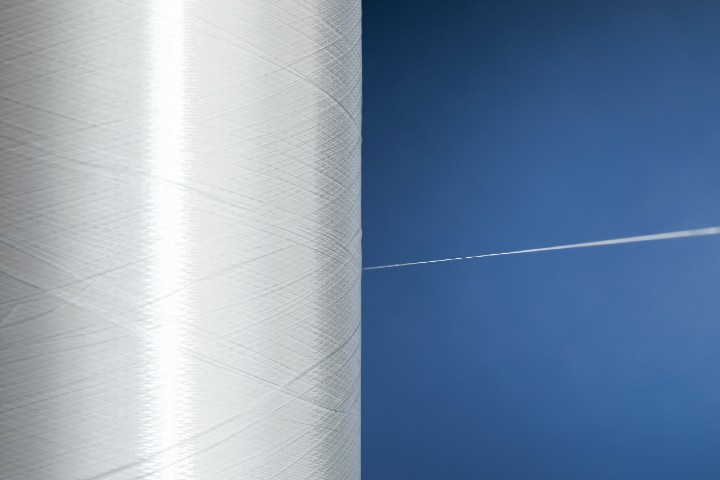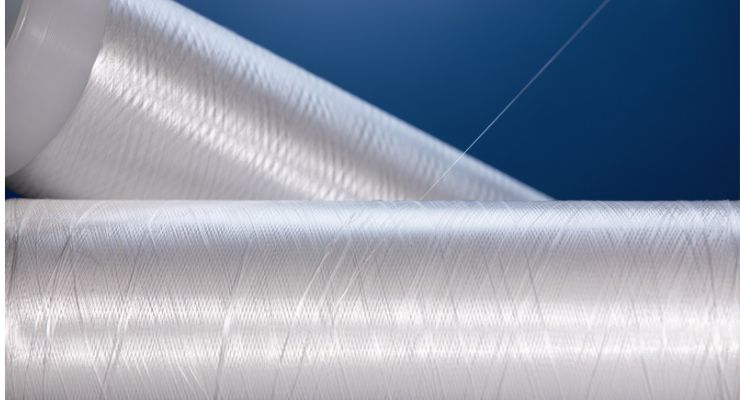Sam Brusco, Associate Editor04.21.23
Honeywell’s Spectra fiber has been used globally for decades. According to the company, pound for pound Spectra fiber is 15 times stronger than steel, more durable than polyester, and has a specific strength 40% greater than aramid fiber.
Spectra fiber is used when lightweight strength is critical for a medical device application. In addition, the materials can be found in industrial and recreational applications like rope and lifting slings, mooring lines, fishing line, sail cloth, and security netting. The ultra-lightweight polyethylene fiber is manufactured using a unique gel spinning process. It’s used for sutures, surgical robots, catheters, and more.
To gain more insight on Honeywell’s Spectra fiber and its applications, MPO spoke with Zachary Murnane, medical fiber global business manager for Honeywell Spectra.
Honeywell’s Spectra Medical Grade (MG) BIO fibers are made of ultra-high molecular weight polyethylene (UHMWPE), which is ultra-lightweight, ultra-high strength, and manufactured through a unique gel spinning process, providing a biocompatible material that has superior resistance to chemicals, water, fatigue, friction and abrasion. Honeywell’s portfolio of Spectra MG BIO fibers are 15 times stronger than steel by weight and three times stronger than polyester by volume.
The fibers are also biocompatible, reduce the risk of body inflammation and irritation, and have also received ISO 13485 certification for manufacturing, adhering to the highest quality management standard in the medical device industry, such as providing customers with end-to-end manufacturing lot traceability. It is an excellent choice for medical applications such as cardiovascular and orthopedic devices, sutures, surgical robots, minimally invasive surgeries, catheters, ACL/PCL reconstruction, and much more.
This year, Honeywell announced the release of Spectra Ultra Fine (UF) BIO fiber, now available in 25 decitex (dtex), which enables minimally invasive cardiovascular and orthopedic device design and helps increase device longevity—given it is a stronger fiber compared to polyester, nylon, or other technologies used. Later this year, we are introducing Spectra Ultra Fine BIO fiber in 10 dtex.
Access to ultra-fine fibers is critical for medical device manufacturers that are building increasingly smaller devices that help make cardiovascular and orthopedic procedures safer and more successful for patients worldwide.
Tendons manufactured with Spectra MG BIO fibers enable single-use surgical appendages, eliminating the need for sterilization reprocessing. The industry is shifting away from the sterilization reprocessing model due to risk of contamination and cost, making Spectra MG BIO fibers the better, more cost-effective choice.

Polyester is often used in TAVR procedures today, but as candidates become younger and younger, the replacement valves that at one time had to last about 15 years, now need to last about 30–40 years. The valves are subject to a constant pulsating load as the heart beats and blood circulates. A stronger material is needed, because after 15 years, TAVR valves made of polyester can succumb to leak failures as their seal integrity declines.
Honeywell Spectra MG BIO fibers are three times stronger than polyester by volume, and they are also smaller and much more durable. Original equipment manufacturers (OEMs) are in the process of evaluating the ultra-fine denier Spectra MG BIO fiber for use in TAVR procedures to create a textile that emulates the seal around the valve, which could replace the less durable polyester versions available now.

OEMs are also evaluating how ultra-fine denier Spectra MG BIO fiber can be used to improve the accuracy of balloon catheters that are used for blockage removal and delivery procedures in dialysis and cardiovascular applications.
Spectra fiber is used when lightweight strength is critical for a medical device application. In addition, the materials can be found in industrial and recreational applications like rope and lifting slings, mooring lines, fishing line, sail cloth, and security netting. The ultra-lightweight polyethylene fiber is manufactured using a unique gel spinning process. It’s used for sutures, surgical robots, catheters, and more.
To gain more insight on Honeywell’s Spectra fiber and its applications, MPO spoke with Zachary Murnane, medical fiber global business manager for Honeywell Spectra.
Sam Brusco: What medical applications (or potential future applications) can Spectra fiber be used for?
The medical device industry’s move to minimally invasive surgical techniques such as laparoscopic and robotic surgery has created a need for medical devices and implants that are smaller and more durable. Honeywell is continually innovating in this area to build a collection of medical-grade fibers that support the industry’s progress in this direction.Honeywell’s Spectra Medical Grade (MG) BIO fibers are made of ultra-high molecular weight polyethylene (UHMWPE), which is ultra-lightweight, ultra-high strength, and manufactured through a unique gel spinning process, providing a biocompatible material that has superior resistance to chemicals, water, fatigue, friction and abrasion. Honeywell’s portfolio of Spectra MG BIO fibers are 15 times stronger than steel by weight and three times stronger than polyester by volume.
The fibers are also biocompatible, reduce the risk of body inflammation and irritation, and have also received ISO 13485 certification for manufacturing, adhering to the highest quality management standard in the medical device industry, such as providing customers with end-to-end manufacturing lot traceability. It is an excellent choice for medical applications such as cardiovascular and orthopedic devices, sutures, surgical robots, minimally invasive surgeries, catheters, ACL/PCL reconstruction, and much more.
This year, Honeywell announced the release of Spectra Ultra Fine (UF) BIO fiber, now available in 25 decitex (dtex), which enables minimally invasive cardiovascular and orthopedic device design and helps increase device longevity—given it is a stronger fiber compared to polyester, nylon, or other technologies used. Later this year, we are introducing Spectra Ultra Fine BIO fiber in 10 dtex.
Access to ultra-fine fibers is critical for medical device manufacturers that are building increasingly smaller devices that help make cardiovascular and orthopedic procedures safer and more successful for patients worldwide.
Brusco: How is Spectra fiber finding use in surgical robotics?
As manufacturers continue to develop smaller and smaller medical devices, they need materials that will enable these new applications. The ultra-high strength of Spectra MG BIO fibers allows surgical robotics manufacturers to replace steel cable tendons in robotic appendages, enabling smaller appendages that have an increased range of motion and surgical accuracy.Tendons manufactured with Spectra MG BIO fibers enable single-use surgical appendages, eliminating the need for sterilization reprocessing. The industry is shifting away from the sterilization reprocessing model due to risk of contamination and cost, making Spectra MG BIO fibers the better, more cost-effective choice.

How is Spectra fiber finding use in transcatheter aortic valve replacement (TAVR) procedures?
The ultra-fine denier Spectra MG BIO fiber in 25 dtex is ideal for use in transcatheter aortic valve replacement (TAVR) procedures because their strength and durability meets the need for raw materials that enable longer useful lives for medical devices, smaller medical textiles, and higher levels of textile flexibility.Polyester is often used in TAVR procedures today, but as candidates become younger and younger, the replacement valves that at one time had to last about 15 years, now need to last about 30–40 years. The valves are subject to a constant pulsating load as the heart beats and blood circulates. A stronger material is needed, because after 15 years, TAVR valves made of polyester can succumb to leak failures as their seal integrity declines.
Honeywell Spectra MG BIO fibers are three times stronger than polyester by volume, and they are also smaller and much more durable. Original equipment manufacturers (OEMs) are in the process of evaluating the ultra-fine denier Spectra MG BIO fiber for use in TAVR procedures to create a textile that emulates the seal around the valve, which could replace the less durable polyester versions available now.

What future Spectra products or applications are you able to speak about?
In TAVR procedures, OEMs are exploring how a colored ultra-fine denier Spectra MG BIO fiber can be used as a surgical marker to improve the accuracy of the TAVR surgical implantation process.OEMs are also evaluating how ultra-fine denier Spectra MG BIO fiber can be used to improve the accuracy of balloon catheters that are used for blockage removal and delivery procedures in dialysis and cardiovascular applications.













